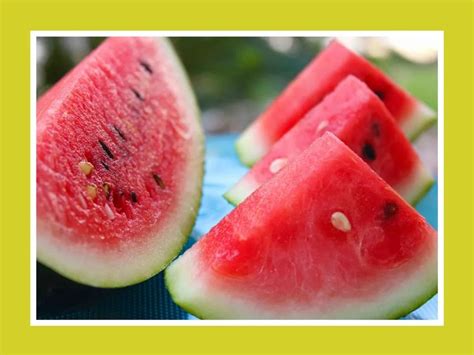
Andrew Zimmern has reignited a long-dormant culinary disagreement with the late Anthony Bourdain, declaring Icelandic fermented shark, known as Hákarl, the “worst” food either had ever tasted. The pronouncement, made during an interview with Mashed, resurrected a years-old debate about the infamous dish’s palatability.
The assertion stems from episodes of their respective travel and food shows, where both Bourdain and Zimmern sampled Hákarl. While both chefs were known for their adventurous palates and willingness to try unusual cuisines, Hákarl proved to be a particularly challenging experience. Zimmern, in his recent interview, unequivocally stated, “We agreed that the worst thing we’d ever tasted was Hákarl.” This reopens a chapter in the history of their complex relationship, which, despite professional rivalry, was marked by mutual respect and camaraderie. The discussion around Hákarl highlights not only the subjective nature of taste but also the enduring impact of Bourdain’s views on the culinary world, even after his passing.
Zimmern’s recent statement underscores the intensity of their shared experience with Hákarl, a dish that often elicits strong reactions, even among seasoned food adventurers. The dish is prepared by fermenting Greenland shark or basking shark and then hanging it to dry for several months. This process, while essential for neutralizing the shark’s high urea content, results in a pungent odor and a flavor that many find overpowering. The disagreement, though seemingly trivial, touches upon deeper themes of culinary boundaries, cultural acceptance, and the personalities that shape our understanding of food.
The debate around Hákarl also serves as a reminder of Bourdain’s influence on the culinary landscape. His willingness to explore and critique cuisines worldwide, often with unflinching honesty, paved the way for a new generation of food enthusiasts and travel documentarians. Zimmern, who shared a similar passion for showcasing global cuisines, often found himself in conversation with Bourdain, both publicly and privately, about their experiences and perspectives. The “worst food” debate, therefore, becomes a microcosm of their broader dialogue about culinary authenticity, cultural sensitivity, and the challenges of representing diverse food traditions to a global audience.
Further elaborating on the properties of Hákarl, the fermentation process is necessary because fresh shark meat contains high levels of urea and trimethylamine oxide, making it toxic for consumption. The traditional method involves burying the shark meat underground for several weeks, followed by hanging it to dry in the open air for several months. This process allows the urea to break down into ammonia and the trimethylamine oxide to convert into trimethylamine, which gives Hákarl its characteristic pungent odor.
Even with the fermentation process, Hákarl retains a strong, ammonia-rich smell and a distinctive taste that has been described as fishy, cheesy, and even reminiscent of cleaning products. It is traditionally served in small cubes, often accompanied by Brennivín, a local Icelandic spirit, to help cleanse the palate. While some Icelanders consider Hákarl a delicacy and a part of their cultural heritage, it remains an acquired taste for most visitors.
The history of Hákarl is deeply intertwined with Iceland’s survival and resourcefulness. In a harsh environment with limited agricultural resources, Icelanders relied on the sea for sustenance. Shark fishing provided a valuable source of protein, and the fermentation process allowed them to preserve the meat for extended periods, especially during the long winter months. Hákarl, therefore, represents a connection to Iceland’s past and a testament to the ingenuity of its people in adapting to challenging conditions.
The contrasting opinions of Bourdain and Zimmern regarding Hákarl underscore the subjective nature of taste and the influence of personal experiences on culinary preferences. While Zimmern has unequivocally labeled it the “worst” food he has ever tasted, others may find its unique flavor and texture intriguing or even enjoyable. The debate also highlights the role of cultural context in shaping our perceptions of food. What may be considered a delicacy in one culture could be deemed unpalatable or even repulsive in another.
The dynamic between Bourdain and Zimmern extended beyond their shared profession as celebrity chefs. They were also friends and rivals, who often challenged each other’s perspectives and pushed each other to explore new culinary horizons. Their debates, whether about Hákarl or other controversial foods, were always conducted with a sense of respect and a shared appreciation for the diversity of global cuisines.
Bourdain’s passing in 2018 left a void in the culinary world and among his peers. His legacy as a fearless explorer, a passionate storyteller, and a champion of culinary authenticity continues to inspire chefs and food enthusiasts around the world. Zimmern, who has often spoken of Bourdain’s influence on his own career, continues to carry the torch by showcasing diverse cuisines and cultures through his television shows and other media projects.
The resurfacing of the Hákarl debate serves as a reminder of the enduring impact of Bourdain’s voice and the ongoing conversation about culinary boundaries and cultural acceptance. It also underscores the importance of approaching unfamiliar foods with an open mind and a willingness to learn about their cultural significance. Whether one finds Hákarl to be a delicacy or an abomination, it remains a fascinating example of the power of food to evoke strong emotions and spark meaningful discussions.
The discussion also brings light to the changing landscape of food media. With the rise of social media and the proliferation of food blogs and television shows, there are more platforms than ever for chefs and food enthusiasts to share their perspectives on global cuisines. This has led to a greater awareness of diverse food traditions and a growing appreciation for culinary authenticity. However, it has also raised questions about cultural appropriation and the responsibility of food media to represent diverse cultures in a respectful and accurate manner.
The story of Hákarl, as told through the experiences of Bourdain and Zimmern, is a complex and multifaceted one. It is a story about culinary adventure, cultural heritage, personal preferences, and the enduring power of food to connect us to the past and to each other. It is a story that continues to evolve as we explore new cuisines and challenge our own culinary boundaries.
Adding to the description of Hákarl’s preparation, the traditional Icelandic method involves burying the shark in a shallow pit near the shoreline, covering it with sand and gravel, and then placing heavy stones on top to press out the fluids. This process lasts for several weeks or even months, depending on the season and the size of the shark. After the initial fermentation period, the shark is then hung to dry in the open air, typically in a shed or barn, for several more months. During this drying period, a crust forms on the outside of the shark meat, which is then removed before consumption.
The distinctive flavor and aroma of Hákarl are due to the presence of ammonia and trimethylamine, which are byproducts of the fermentation process. These compounds give Hákarl its characteristic pungent odor and its sharp, slightly bitter taste. While some people find this taste repulsive, others appreciate its unique flavor profile and its connection to Icelandic culinary traditions.
Hákarl is typically served in small cubes, often as part of a traditional Icelandic food platter called “Þorramatur,” which is consumed during the Þorrablót midwinter festival. Þorramatur includes a variety of traditional Icelandic foods, such as hangikjöt (smoked lamb), svið (singed sheep’s head), and blóðmör (blood pudding). Hákarl is often accompanied by Brennivín, a clear, unsweetened schnapps flavored with caraway seeds, which is said to help cleanse the palate and neutralize the strong taste of the fermented shark.
The consumption of Hákarl is often seen as a rite of passage for visitors to Iceland, and many tourists are eager to try this unique and challenging food. However, it is important to approach Hákarl with caution, as its strong odor and taste can be overwhelming for those who are not accustomed to it. It is also important to remember that Hákarl is a product of a specific cultural tradition, and it should be treated with respect and appreciation.
The debate surrounding Hákarl also raises questions about the ethics of eating unusual or controversial foods. Some people argue that it is unethical to consume foods that are considered to be offensive or repulsive by other cultures, while others argue that it is important to be open to new culinary experiences and to respect the traditions of different cultures. There is no easy answer to this question, and it is up to each individual to decide what they are comfortable eating.
The relationship between Bourdain and Zimmern was complex and multifaceted. They were both successful chefs, television personalities, and authors, and they shared a passion for exploring diverse cultures and cuisines. However, they also had different personalities and different approaches to their work. Bourdain was known for his edgy, irreverent style, while Zimmern was known for his more affable, enthusiastic approach. Despite their differences, they respected each other’s talents and accomplishments, and they often collaborated on projects.
The Hákarl debate is just one example of the many discussions and debates that Bourdain and Zimmern had over the years. They often disagreed on culinary matters, but they always did so with a sense of humor and respect. Their debates were often entertaining and informative, and they helped to broaden the perspectives of their audiences.
Bourdain’s legacy continues to inspire chefs and food enthusiasts around the world. His willingness to challenge culinary conventions and to explore diverse cultures has had a profound impact on the food industry. Zimmern is one of many chefs who have been influenced by Bourdain’s work, and he continues to carry the torch by showcasing diverse cuisines and cultures through his television shows and other media projects.
The story of Hákarl, as told through the experiences of Bourdain and Zimmern, is a reminder that food is more than just sustenance. It is also a cultural artifact, a form of communication, and a source of pleasure and adventure. By exploring diverse cuisines and challenging our own culinary boundaries, we can learn more about ourselves and about the world around us.
The continued discussion surrounding Hákarl also underscores the power of food to evoke strong emotions and to spark meaningful conversations. Whether one finds Hákarl to be a delicacy or an abomination, it is undeniable that it is a food that provokes a reaction. This reaction can be a result of the food’s unusual flavor, its cultural significance, or its connection to the history and traditions of Iceland.
Ultimately, the story of Hákarl is a story about the human experience. It is a story about survival, adaptation, cultural identity, and the enduring power of food to connect us to the past and to each other. It is a story that will continue to be told and retold as we continue to explore the diverse and fascinating world of food.
Expanding on the sensory experience of consuming Hákarl, beyond the pungent odor and ammonia-rich flavor, the texture also contributes to the overall experience. The texture can vary depending on the specific cut of shark and the duration of the fermentation and drying process. Some pieces may be relatively firm and chewy, while others may be softer and more gelatinous. The combination of the unique flavor profile and the unusual texture can be both intriguing and challenging for first-time consumers.
The preparation of Hákarl is not only a culinary tradition but also a testament to the resourcefulness and ingenuity of the Icelandic people. In a harsh and unforgiving environment, they developed a method for preserving a valuable food source and making it safe for consumption. This method, which has been passed down through generations, is a reminder of the importance of adapting to one’s environment and making the most of available resources.
The cultural significance of Hákarl extends beyond its role as a traditional food. It is also a symbol of Icelandic identity and a reminder of the country’s history and heritage. The consumption of Hákarl is often seen as a way to connect with the past and to celebrate the traditions of Iceland.
In recent years, there has been growing interest in traditional foods and culinary heritage around the world. This interest has led to a renewed appreciation for foods like Hákarl, which were once considered to be outdated or even undesirable. As people become more aware of the cultural and historical significance of these foods, they are more likely to approach them with an open mind and a willingness to try something new.
The debate surrounding Hákarl also highlights the importance of cultural sensitivity when it comes to food. What may be considered a delicacy in one culture could be seen as offensive or repulsive in another. It is important to be aware of these cultural differences and to approach unfamiliar foods with respect and understanding.
The story of Bourdain and Zimmern’s differing opinions on Hákarl serves as a reminder that taste is subjective and that there is no such thing as universally good or bad food. What one person finds delicious, another person may find disgusting. This subjectivity is influenced by a variety of factors, including personal preferences, cultural background, and past experiences.
The legacy of Bourdain and Zimmern extends beyond their individual achievements. They both played a significant role in shaping the way we think about food and culture. Their willingness to explore diverse cuisines and to challenge culinary conventions has inspired a new generation of chefs and food enthusiasts.
The ongoing conversation about Hákarl is a testament to the power of food to spark meaningful discussions and to connect us to each other. Whether we love it or hate it, Hákarl is a food that provokes a reaction and that reminds us of the importance of cultural diversity and culinary exploration.
The story of Hákarl, as told through the experiences of Bourdain and Zimmern, is a story that will continue to evolve as we continue to explore the diverse and fascinating world of food. It is a story that reminds us of the importance of being open to new experiences and of respecting the traditions of different cultures.
Frequently Asked Questions (FAQ)
1. What exactly is Hákarl?
Hákarl is a traditional Icelandic dish consisting of Greenland shark or basking shark that has been fermented and then hung to dry for several months. The fermentation process is necessary to reduce the high levels of urea and trimethylamine oxide present in fresh shark meat, which makes it toxic to consume. The final product has a strong ammonia-rich smell and a distinctive taste.
2. Why did Andrew Zimmern call Hákarl the “worst” food he and Anthony Bourdain ever tasted?
During an interview with Mashed, Andrew Zimmern stated that he and Anthony Bourdain both agreed that Hákarl was the “worst” food they had ever tasted. This pronouncement references their individual experiences sampling the dish on their respective travel and food shows. The strong, pungent flavor and odor of Hákarl, resulting from the fermentation process, often elicit strong negative reactions, even from seasoned food adventurers like Zimmern and Bourdain.
3. How is Hákarl traditionally prepared?
The traditional preparation of Hákarl involves several steps. First, the shark is beheaded and gutted. Then, the body is buried in a shallow pit, typically near the shoreline, and covered with sand and gravel. Heavy stones are placed on top to press out the fluids. This fermentation period lasts for several weeks or months. After this initial stage, the shark is dug up and hung to dry in the open air for several more months. During the drying process, a crust forms on the outside, which is removed before consumption.
4. What is the cultural significance of Hákarl in Iceland?
Hákarl holds significant cultural importance in Iceland. It is a traditional food that dates back centuries and represents the resourcefulness of Icelanders in adapting to a harsh environment with limited agricultural resources. Shark fishing provided a valuable source of protein, and the fermentation process allowed them to preserve the meat for extended periods. Hákarl is often consumed during traditional Icelandic festivals, such as Þorramatur during the Þorrablót midwinter festival, and it is seen as a symbol of Icelandic identity and heritage.
5. What are the potential health risks associated with eating improperly prepared Hákarl?
Improperly prepared Hákarl can pose health risks due to the presence of high levels of urea and trimethylamine oxide in fresh shark meat. These compounds are toxic to humans. The fermentation process is crucial for breaking down these compounds and making the shark meat safe for consumption. Consuming shark meat that has not been properly fermented can lead to illness and potentially serious health complications. It is essential to ensure that Hákarl is prepared according to traditional methods to mitigate these risks.









